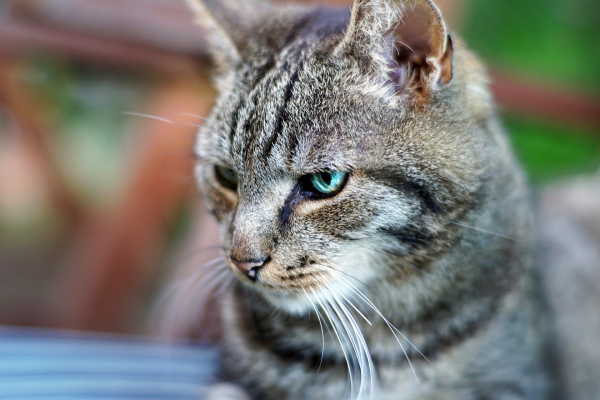Hot Asphalt is No Good for Dogs’ Paws.
Dogs are not only at risk of overheating in summer. High temperatures might also burn their paws, if we let them walk on hot surfaces.
The European Shorthair looks like a common cat and its nature is not as stable as other breeds’. That’s why it’s not extremely famous in the world except for Scandinavia, where it’s still quite popular.


This breed looks a lot like common domestic cats you can see in the streets. The allowed fur colours are only the so-called “natural”, i.e. black, red, tortoiseshell blue, blue and cream. Combinations with white spots, white patterns or pure white are also possible.
Thanks to its common look, colour and its resemblance to the British Shorthair and American Shorthair, these cats are not as popular as some more exotic breeds. Basically, they are only popular in Scandinavia where they are kept very often.
They are medium-sized to large cats with the sturdy and well-muscled body. Practically, they only differ from common cats because of their stable breed characteristics and better hair. The hair is short, springy and glossy. Taking care of it takes only minimum amount of time (with the exception of moulting periods).
The nature of the European Shorthair is not as definite as it is in other breeds. It is caused by the fact that this breed emerged from common domestic cats which are very different in nature. Therefore, some are cuddly couch potatoes and others are solitary hunters.
However, their character is inherited to a certain level, so the nature of the kittens can be predicted based on the nature of their parents. Most European Shorthairs are friendly. They get on well with other cats as well as dogs. They are intelligent and playful. That is something they all have in common which also applies to the fact they are healthy and strong cats. Almost every cat of this breed is capable of keeping your household mouse-free.
Even though this is practically a common domestic cat which doesn’t stand out with its appearance nor its characteristic features, the pure blood still has its benefits. You can be sure that it doesn’t have any hereditary disease or character fault such as shyness or aggression.


Dogs are not only at risk of overheating in summer. High temperatures might also burn their paws, if we let them walk on hot surfaces.


Besides FIP and FIV, FeLV is another fatal virus disease of cats. It is often called cat leukaemia because leukaemia is one of the common symptoms of the disease. How can your cat get infected, how can you recognize and treat it?


The Abyssinian is a short-haired elegant creature with a strong personality and history going back to the ancient Egypt. It wants to be a rightful family member and you won’t get enough of its thick, silky fur.


If you are looking for a very social breed, you have already found one. The Japanese Chin takes the role of a companion as its life’s mission. This mini dog is joyful, playful and obedient companion for both children and adults.


Would you like to give the best to your dog but there is so many brands and types of cans on the market that you get confused? I’m coming with a few tips how to choose, what shouldn’t be missing in the can and what shouldn’t be there at all.


Relationships between a cat and a dog can be difficult. Some of them might be companions for life, others are mortal enemies. This is a story of our pack which consisted of various characters but we have always somehow managed living together.


In summer, we throw off one piece of clothes after another. Especially in the last few years when the temperatures go up to tropical values. You may say that the fur of your pet must be terrible and it will be better to cut it. Is that really true?


Many adventures await a cat outside and hopefully even a few cat friends. However, also various dangers might be there as well. What can happen to a cat outdoors?


Not only dogs and cats communicate with us non-verbally. Even rabbits tell us what and how they feel with their non-verbal expressions such as postures, gestures and sounds. It helps us understand what mood they are just in. Let’s look at expression...


You can get natural variants of antiparasitic agents to you dogs as well or you can make them at home. What are their benefits and their downsides?


It is a well-known fact that cats love bright and warm spots, they like to relax on warm windowsills. Therefore, even though they are famous sleepyheads, they get new energy with the spring coming, they are more active, more sociable and more joyful....


FIV is a feared viral infectious disease of cats. It causes a slow disruption of immune systems, similarly to human virus called HIV. What is the cause and the progress of this malicious disease and what does its terminal stage look like?...